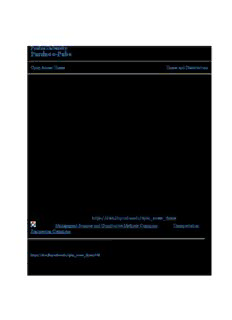Table Of ContentPurdue University
Purdue e-Pubs
Open Access Theses Theses and Dissertations
Spring 2015
Four runway configuration types and their relation
to arrival delays
Rachel Jayne Kennedy
Purdue University
Follow this and additional works at:https://docs.lib.purdue.edu/open_access_theses
Part of theManagement Sciences and Quantitative Methods Commons, and theTransportation
Engineering Commons
Recommended Citation
Kennedy, Rachel Jayne, "Four runway configuration types and their relation to arrival delays" (2015).Open Access Theses. 489.
https://docs.lib.purdue.edu/open_access_theses/489
This document has been made available through Purdue e-Pubs, a service of the Purdue University Libraries. Please contact epubs@purdue.edu for
additional information.
Graduate School Form 30
Updated 1/15/2015
PURDUE UNIVERSITY
GRADUATE SCHOOL
Thesis/Dissertation Acceptance
This is to certify that the thesis/dissertation prepared
By RachelKennedy
Entitled
FOURRUNWAYCONFIGURATIONTYPESANDTHEIRRELATIONTOARRIVALDELAYS
MasterofScience
For the degree of
Is approved by the final examining committee:
KathryneNewton
Chair
MaryJohnson
MathiasSutton
To the best of my knowledge and as understood by the student in the Thesis/Dissertation
Agreement, Publication Delay, and Certification Disclaimer (Graduate School Form 32),
this thesis/dissertation adheres to the provisions of Purdue University’s“Policy of
Integrity in Research”and the use of copyright material.
KathryneNewton
Approved by Major Professor(s):
MichaelDyrenfurth 4/8/2015
Approved by:
Head of the Departmental Graduate Program Date
i
FOUR RUNWAY CONFIGURATION TYPES ANDTHEIR RELATIONTO
ARRIVAL DELAYS
A Thesis
Submitted to the Faculty
of
Purdue University
by
Rachel J.Kennedy
In Partial Fulfillment of the
Requirements for the Degree
of
Master of Science
May 2015
Purdue University
West Lafayette, Indiana
ii
TABLE OF CONTENTS
Page
LIST OF TABLES..............................................................................................................v
LIST OF FIGURES...........................................................................................................vi
ABSTRACT......................................................................................................................vii
CHAPTER 1. INTRODUCTION.................................................................................1
1.1 Statement of the Problem................................................................................1
1.2 Significance of the Problem............................................................................2
1.3 Scope of the Study..........................................................................................2
1.4 Research Question..........................................................................................3
1.5 Assumptions...................................................................................................3
1.6 Limitations......................................................................................................4
1.7 Delimitations...................................................................................................4
1.8 Definitions of Key Terms...............................................................................5
1.9 Summary.........................................................................................................6
CHAPTER 2. REVIEW OF THE LITERATURE.......................................................7
2.1 Origins of Flight.............................................................................................7
2.2 Development of Passenger Flight...................................................................8
2.3 Development of Airports................................................................................9
2.4 Air Transportation Today.............................................................................10
2.4.1 Customer Satisfaction..........................................................................10
2.4.2 Reporting.............................................................................................11
2.5 Delays...........................................................................................................12
2.5.1 Taxiing.................................................................................................14
2.5.2 Queuing................................................................................................15
iii
Page
2.5.3 Gate Availability..................................................................................17
2.6 Runway Configurations................................................................................17
2.6.1 Single...................................................................................................18
2.6.2 Intersecting..........................................................................................18
2.6.3 Parallel.................................................................................................19
2.6.4 Open-V................................................................................................22
2.6.5 Restrictions and Considerations..........................................................23
2.6.6 Ideal Configuration..............................................................................24
2.7 Airport Categories ........................................................................................25
2.8 Incursions......................................................................................................26
2.9 Statistical Testing..........................................................................................27
2.9.1 Analysis of Variance............................................................................27
2.9.1.1 One-Way ANOVA.....................................................................28
2.9.1.2 Two-Way ANOVA....................................................................29
2.10 Summary.......................................................................................................29
CHAPTER 3. METHODOLOGY..............................................................................31
3.1 Data Acquisition...........................................................................................31
3.1.1 FAA Operated Airports.......................................................................33
3.1.2 Joint-Use Airports................................................................................33
3.1.3 Runway Classification.........................................................................34
3.1.4 Hub Classification...............................................................................37
3.1.5 Software...............................................................................................38
3.2 Analysis........................................................................................................38
3.3 Threats..........................................................................................................39
3.4 Summary.......................................................................................................39
CHAPTER 4. PRESENTATION OF DATA AND FINDINGS................................41
4.1 Data Removal and Classification..................................................................41
4.2 ANOVA Conditions.....................................................................................43
4.3 On-Time Arrival Two-Way ANOVA..........................................................46
4.4 Summary.......................................................................................................49
CHAPTER 5. CONCLUSIONS, DISCUSSION, AND RECOMMENDATIONS...50
5.1 On-Time Arrival Two-Way ANOVA Conclusions......................................50
5.2 Answer to Research Question.......................................................................52
5.3 Recommendations for Future Work.............................................................52
5.4 Summary.......................................................................................................53
iv
Page
LIST OF REFERENCES..................................................................................................53
APPENDICES
Appendix A Airlines With At Least One Percent of Scheduled Passenger Service.....57
Appendix B Required On-Time Performance Statistics...............................................59
Appendix C Retrieval of Data from RITA Database....................................................61
Appendix D Joint-Use Airports....................................................................................63
Appendix E FAA Airport Diagram Retrieval...............................................................65
Appendix F Data of Airports Eligible for Analysis......................................................66
Appendix G Airports Removed from the Dataset.........................................................78
v
LIST OF TABLES
Table Page
Table 4.1 Final Airport Category Counts.........................................................................45
Table 4.2 Descriptive Statistics for On-Time Arrival Percentage Data............................47
Table 4.3 Two-Way ANOVA Output for On-Time Arrival.............................................48
Table 5.1Two-Way ANOVA Summary of Results.........................................................51
vi
LIST OF FIGURES
Figure.............................................................................................................................Page
Figure 2.1 Percentage of Delay Types in 2013.................................................................13
Figure 2.2 Diagram of Newark Liberty International Airport..........................................15
Figure 2.3 SingleRunway Configuration.........................................................................18
Figure 2.4 Intersecting Runway Configuration................................................................19
Figure 2.5 Parallel Runway Configuration.......................................................................21
Figure 2.6 Open-V Runway Configurations.....................................................................23
Figure 2.7 Travis Air Force Base Runway Configuration................................................25
Figure 3.1 Airport Classification Process.........................................................................35
Figure 3.2 Potential Intersecting Runways for Airports with Two Runways...................35
Figure 3.3 Potential Non-Intersecting Runways for Airports with Two Runways...........36
Figure 3.4 Potential Classifications for Airports with More Than Two Runways...........36
Figure 4.1 Histogram of All On-Time Arrival Percentages.............................................43
Figure 4.2 Probability Plot of On-Time Arrival Percentages...........................................44
Figure 4.3 Test for Equal Variances.................................................................................46
Figure 4.4 Estimated Marginal Means Plot of On-Time Arrival Percentages..................48
vii
ABSTRACT
Kennedy, Rachel J. M.S., Purdue University, May 2015. Four Runway Configuration
Types and Their Relation to Arrival Delays. Major Professor: Kathryne Newton
Aside from a safe flight, airline passengers expect to arrive to their destination on
time. With an abundance of flights in the United States arriving late each day, it has yet
to be determined if the airport’s layout plays a role. This research looks at four common
runway configuration types at hub and non-hub airports to determine if runway
configurations affect arrival delays. A two-way ANOVA is conducted comparingthe
means of the on-time arrival percentage between airports exhibiting each of the four
runway configurations as well as hub and non-hub airport status. The results determine if
any or none of the runway configurations and hub types have the greatest influence on
arrival delays.
Description:FOUR RUNWAY CONFIGURATION TYPES AND THEIR RELATION TO. ARRIVAL DELAYS. A Thesis. Submitted to the Faculty of. Purdue University by. Rachel J. Kennedy. In Partial Fulfillment of the. Requirements for the Degree of. Master of Science. May 2015. Purdue University. West Lafayette

